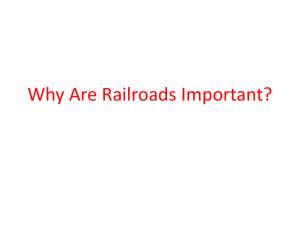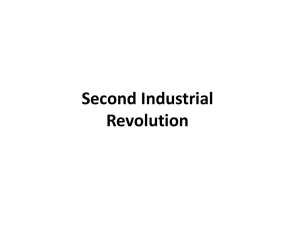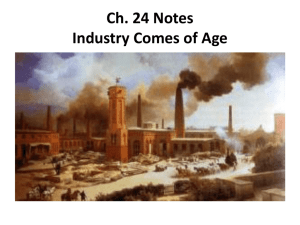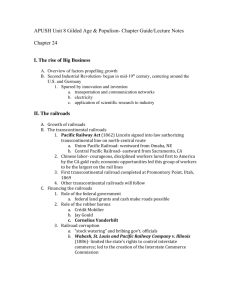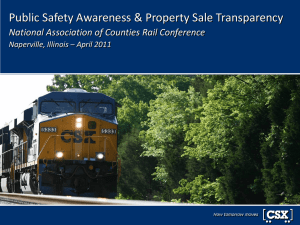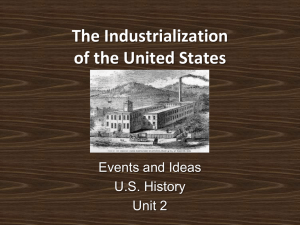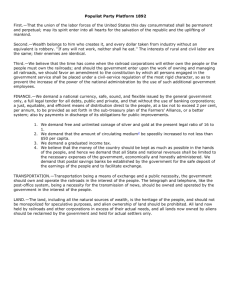Chapter 24 Reading Guide - Jessamine County Schools
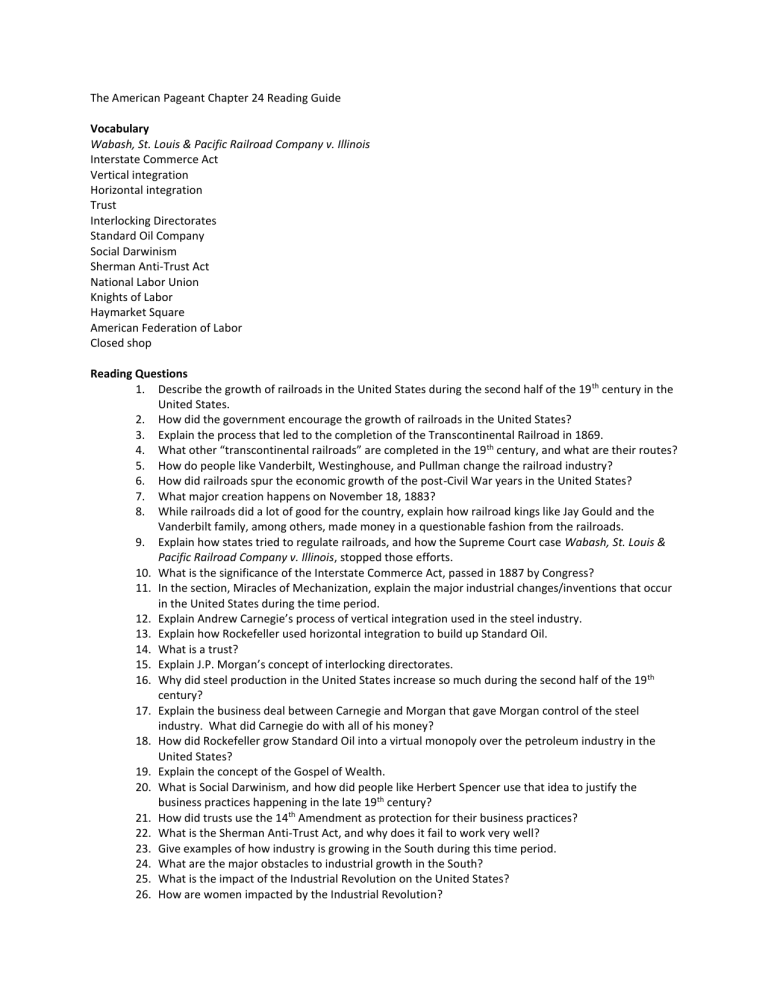
The American Pageant Chapter 24 Reading Guide
Vocabulary
Wabash, St. Louis & Pacific Railroad Company v. Illinois
Interstate Commerce Act
Vertical integration
Horizontal integration
Trust
Interlocking Directorates
Standard Oil Company
Social Darwinism
Sherman Anti-Trust Act
National Labor Union
Knights of Labor
Haymarket Square
American Federation of Labor
Closed shop
Reading Questions
1.
Describe the growth of railroads in the United States during the second half of the 19 th century in the
United States.
2.
How did the government encourage the growth of railroads in the United States?
3.
Explain the process that led to the completion of the Transcontinental Railroad in 1869.
4.
What other “transcontinental railroads” are completed in the 19 th century, and what are their routes?
5.
How do people like Vanderbilt, Westinghouse, and Pullman change the railroad industry?
6.
How did railroads spur the economic growth of the post-Civil War years in the United States?
7.
What major creation happens on November 18, 1883?
8.
While railroads did a lot of good for the country, explain how railroad kings like Jay Gould and the
Vanderbilt family, among others, made money in a questionable fashion from the railroads.
9.
Explain how states tried to regulate railroads, and how the Supreme Court case Wabash, St. Louis &
Pacific Railroad Company v. Illinois, stopped those efforts.
10.
What is the significance of the Interstate Commerce Act, passed in 1887 by Congress?
11.
In the section, Miracles of Mechanization, explain the major industrial changes/inventions that occur in the United States during the time period.
12.
Explain Andrew Carnegie’s process of vertical integration used in the steel industry.
13.
Explain how Rockefeller used horizontal integration to build up Standard Oil.
14.
What is a trust?
15.
Explain J.P. Morgan’s concept of interlocking directorates.
16.
Why did steel production in the United States increase so much during the second half of the 19 th century?
17.
Explain the business deal between Carnegie and Morgan that gave Morgan control of the steel industry. What did Carnegie do with all of his money?
18.
How did Rockefeller grow Standard Oil into a virtual monopoly over the petroleum industry in the
United States?
19.
Explain the concept of the Gospel of Wealth.
20.
What is Social Darwinism, and how did people like Herbert Spencer use that idea to justify the business practices happening in the late 19 th century?
21.
How did trusts use the 14 th Amendment as protection for their business practices?
22.
What is the Sherman Anti-Trust Act, and why does it fail to work very well?
23.
Give examples of how industry is growing in the South during this time period.
24.
What are the major obstacles to industrial growth in the South?
25.
What is the impact of the Industrial Revolution on the United States?
26.
How are women impacted by the Industrial Revolution?
27.
Describe the transformation in the type of jobs people are doing from 1860-1900.
28.
What is the purpose of labor unions, and how do employers try to stop their activity?
29.
For each of the following labor unions, know who made up their members, year it started, and what major ideas they promoted (e.g. shorter workdays).
- National Labor Union (Colored National Labor Union, also)
- Knights of Labor (Terrence Powderly)
- American Federation of Labor (Samuel Gompers)
30.
What is the Haymarket Square episode, and how did it end up being the downfall of the Knights of
Labor?
31.
Why was the idea of a closed shop so important to Samuel Gompers?
32.
How common had strikes become by 1900?
